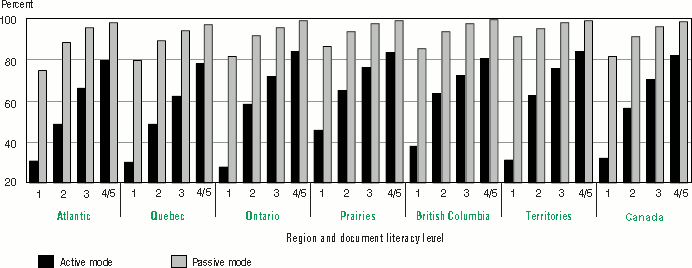
Figure 4.13
Source: International Adult Literacy and Skills Survey, 2003.
Proficiency of Canadians, aged 16 to 65, in literacy, numeracy and problem solving is clearly linked to their labour market outcomes. The average proficiency scores of those employed are higher than those who are either unemployed or not in the labour force. The employment rates are also higher for those with higher proficiency levels. Those who work in more knowledge intensive jobs tend to have higher literacy and numeracy proficiencies. In addition, higher earnings of Canadians are associated with higher proficiency, particularly for women. The findings highlight the importance of building and maintaining human capital amongst Canadians of working age.
The demand for high literacy and numeracy proficiency is likely to increase further as Canada moves more and more towards a knowledge-based economy. In every industry group except one, low and medium low technology, at least 50 percent of the labour force is proficient at Level 3 or above in document literacy. And, the proportion is just under 50 percent in low and medium low technology industries.
Continuous learning assists in maintaining competencies and acquiring new ones. Participation in adult learning is consistently related to proficiency in literacy and numeracy. Those with higher levels of proficiency have higher participation rates in learning activities overall and in active modes of informal learning.